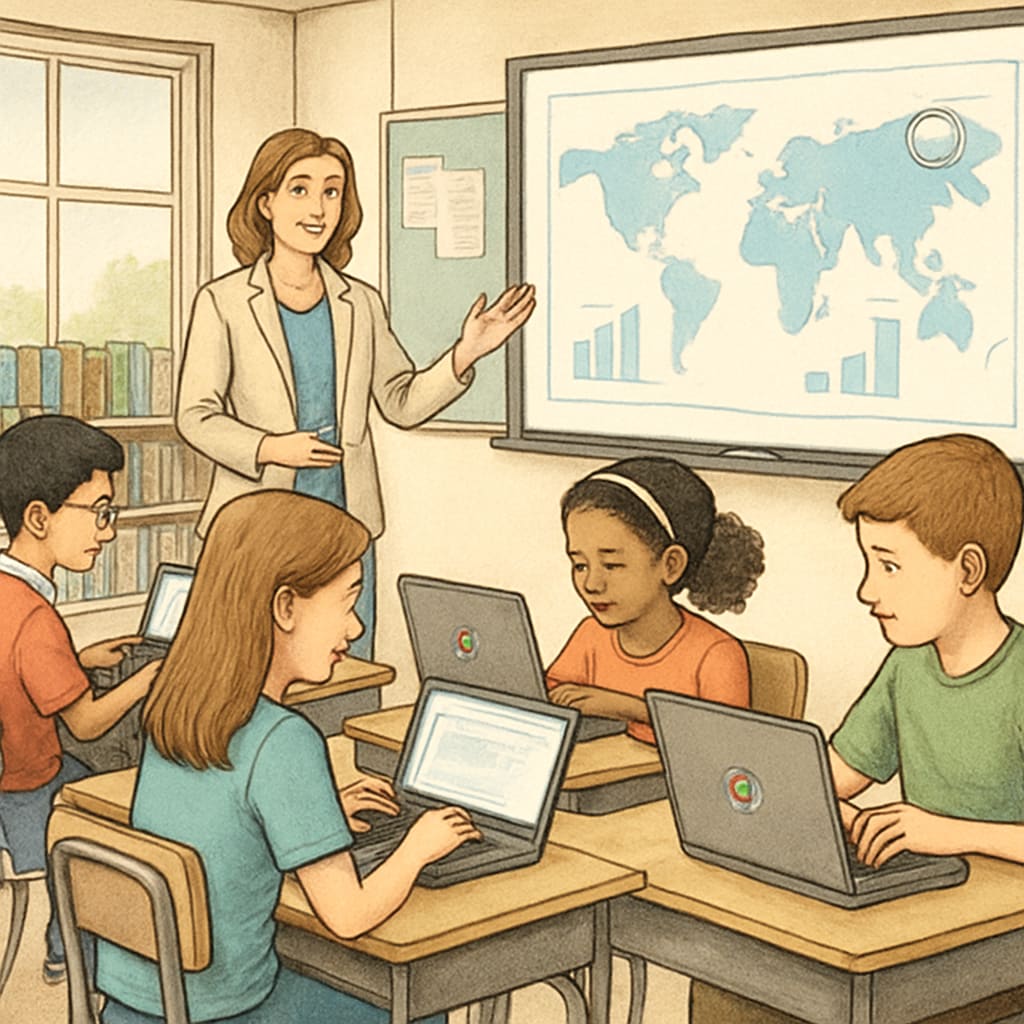In recent years, education technology has revolutionized classrooms across the globe. Tools like Chromebooks have become ubiquitous, promising to make learning more efficient and accessible. However, as schools increasingly integrate these devices into their curriculum, one crucial question remains: Can education technology truly nurture critical thinking, or does its emphasis on efficiency inadvertently hinder deeper intellectual engagement? This duality—enhancing efficiency while potentially limiting critical thought—is a growing concern for educators.
The Promise of Education Technology
Education technology, or EdTech, has brought undeniable benefits to modern classrooms. Digital tools like Chromebooks streamline access to information, enabling students to conduct research, collaborate on projects, and submit assignments with unprecedented ease. Furthermore, platforms like Google Classroom and Kahoot make lessons interactive and engaging, addressing diverse learning styles and needs.
For example, a student researching historical events can quickly access primary sources, academic papers, and multimedia content with a few clicks. This convenience not only saves time but also exposes learners to a wide array of perspectives.

However, this efficiency comes with trade-offs. By delivering answers so quickly, these tools may inadvertently discourage students from questioning the information they encounter or developing the perseverance needed to solve complex problems. This raises concerns about whether such tools align with the educational goal of fostering critical thinking.
The Challenge of Fostering Critical Thinking
Critical thinking—the ability to analyze, evaluate, and synthesize information independently—is a cornerstone of education. It equips students to navigate an increasingly complex world marked by misinformation, rapid technological advancements, and global challenges. Yet, the very tools designed to aid learning might hinder this skill.
One issue is the overreliance on pre-packaged digital content. Many EdTech platforms offer structured, multiple-choice quizzes or algorithm-driven “adaptive learning” paths. While these features are effective for assessing factual knowledge, they rarely encourage students to think deeply or question underlying assumptions. As a result, students may become passive consumers of information rather than active, critical thinkers.
Moreover, the instant gratification provided by technology can discourage patience and intellectual curiosity. For instance, when using a Chromebook to complete a math problem or write an essay, students might be tempted to rely on auto-correct features or seek instant solutions online rather than grappling with the task themselves.

Striking a Balance Between Efficiency and Depth
To address this issue, educators must find a balance between leveraging technology for efficiency and preserving the essence of critical thinking. Here are some strategies:
- Incorporate open-ended tasks: Assign projects that require analysis, discussion, and evidence-based conclusions. For example, ask students to compare multiple historical narratives instead of summarizing textbook content.
- Encourage reflective practices: Use digital tools to create journals or discussion forums where students can share their thought processes and critique each other’s ideas.
- Blend traditional and digital resources: Combine the efficiency of Chromebooks with the depth of physical books, peer debates, and hands-on experimentation.
Additionally, educators should model critical thinking by questioning content presented through digital platforms. For example, they might ask, “What biases could this source have?” or “How does this data compare to other perspectives?” This approach helps students view technology as a tool rather than a shortcut.
Final Reflections: The Future of Education Technology
As schools continue to adopt EdTech solutions, understanding their limitations is as important as embracing their benefits. Tools like Chromebooks can undoubtedly enhance learning efficiency and engagement, but they must be supplemented with teaching methods that emphasize critical thinking skills.
In the end, the goal of education is not merely to equip students with information but to prepare them for a lifetime of questioning, reasoning, and problem-solving. By using technology thoughtfully, educators can ensure that the digital classroom remains a space for intellectual growth and curiosity.
Readability guidance: The article uses short paragraphs, strategic lists, and transitions like “however” and “for example” to ensure clarity. It minimizes passive voice and long sentences while maintaining a professional tone.


